Menschenliebe ist das Wesen der Sittlichkeit, Menschenkenntnis das Wesen der Weisheit.
Koreanisch
Am 23. und 24. Dezember bleibt das Okims geschlossen. Gerne sind wir vor dem Heiligen Abend und an den Weihnachtsfeiertagen für Sie im Einsatz. Herzlichen Dank für Ihr Verständnis, Ihr Okims
Die koreanische Kochkunst wird Hansik genannt und baut auf gesunden und frischen Nahrungsmitteln auf. Durch die Lage als Halbinsel stehen traditionell alle Arten Meeresfrüchte auf der Karte, ergänzt und begleitet von vielfältigen Kräutern, Pilzen und anderem Wildgemüse. In jedem Fall setzt die koreanische Küche auf natürlich leichte Zubereitung, um alle Nährstoffe zu erhalten. Der geringe Fettanteil, wenig Kalorien und der Verzicht auf Milchprodukte machen koreanisches Essen zur ersten Wahl für gesundheitsbwusste Menschen.

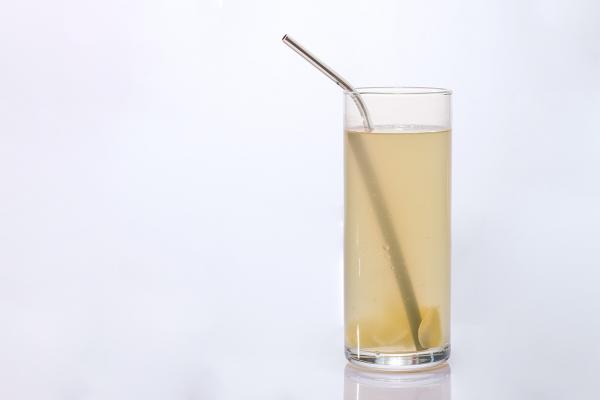
생강차
Saeng-gang Cha
0,5 l
€ 5,90
Honig Ingwer Aufguss
Dieses Getränk, mit der pikanten Ingwernote bringt den Kreislauf in Schwung und vertreibt jede Müdigkeit. Genießen Sie den einzigartigen Geschmack kalt im Glas.
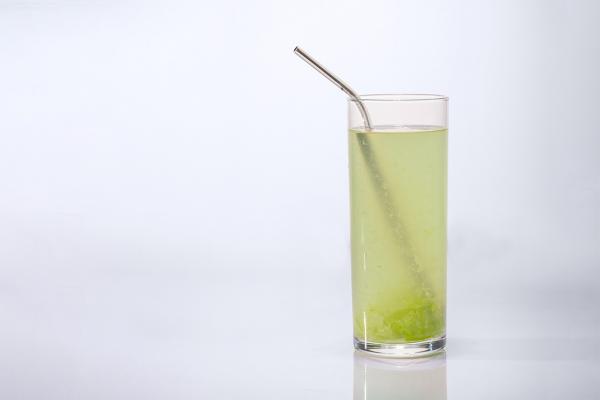
매실차
Maesil Cha
0,5 l
€ 5,90
Pflaumenaufguss kalt
Mit in Honig eingelegten kleinen grünen Früchten wird dieses Pflaumenaufguss Getränk gemacht. Es hilft gegen Ermüdungserscheinungen und gegen Appetitlosigkeit. Entgiftet zudem den Körper und wirkt bei Verdauungsbeschwerden. Der bitter-süßliche Geschmack von grünen Pflaumen im Glas ist ein genussvoller Speisebegleiter.
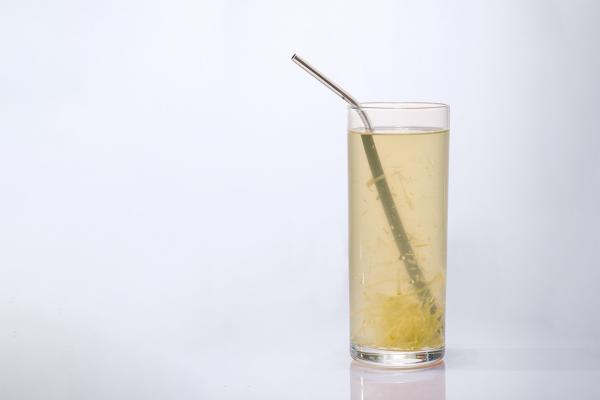
유자차
Yuja Cha
0,5 l
€ 5,90
Zitronen-Honig Aufguss
Fruchtig-süßer Zitrustee aus mit kaltem oder heißem Wasser aufgegossenem Yucheong, einer Art Marmelade aus der einzigartigen koreanischen Yuzu-Frucht, deren Geschmack zwischen Grapefruit und Mandarine liegt. Yujacha enthält weder Tein noch Koffein, ist reich an Vitamin C und ein geeignetes Kaltgetränk für jedes Alter.
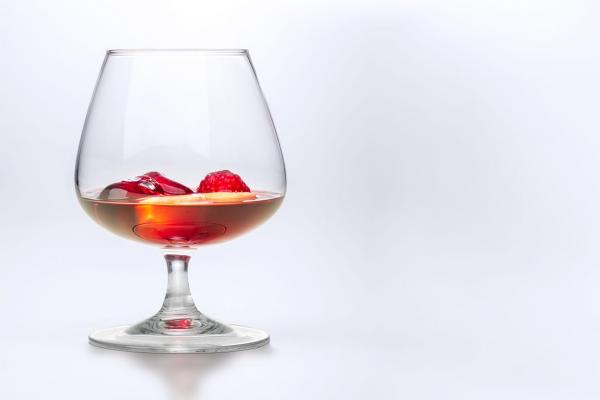
복분자주
Bokbunja-ju
4 cl
€ 4,90
Wilder Himbeerwein
Ein Fruchtwein aus der wilden schwarzen Himbeere Bokbunja. Das Getränk wird durch fermentieren hergestellt. Ein Alkoholgehalt von 14 Vol. %, eine tiefrote Farbe sowie die mäßige Süße zeichnen es aus.
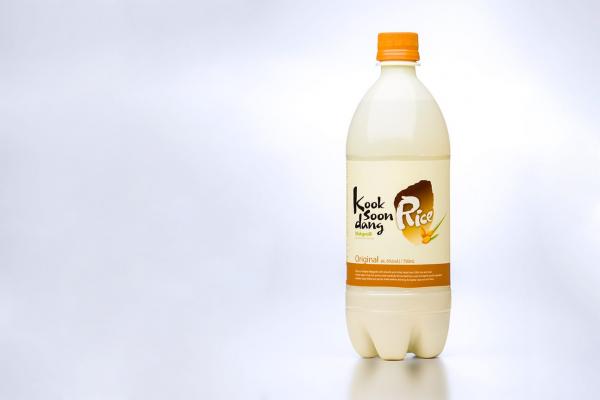
막걸리
Makgeolli
0,75 l
€ 11,50
alkoholisches Reisgetränk
Das milchig trübe Getränk aus Reis ist wahrscheinlich in seiner Form das älteste alkoholische Getränk in Korea. Geschmacklich erinnert es an vergorenen Most, dem Stärke und Säure zugefügt wurde. Alkoholgehalt von etwa 6-8 Vol.-%
Makgeolli fördert die Verdauung, stärkt das Immunsystem und wirkt verjüngend. Das traditionsreiche Getränk wird mit der Kelle in Schalen geschöpft und ist seit Kurzem wieder bei der Jugend in Korea und Japan ganz besonders beliebt.
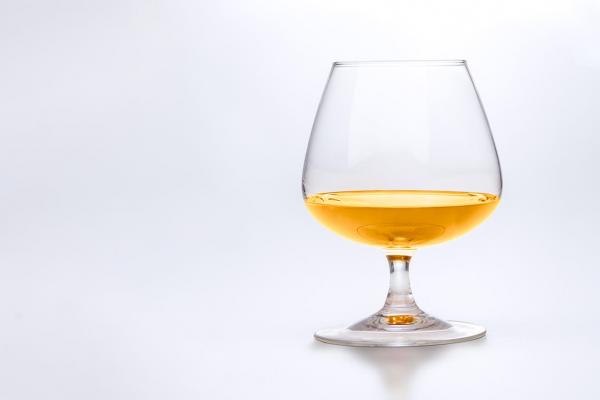
매실주
Bohae Korean Plum Wine
4 cl
€ 4,90
Koreanischer Pflaumenwein
Bohae Korean Plum Wine schmeckt am besten gekühlt als Aperitif, zu rohem Fisch oder frischen Speisen.
,Die Pflaume gilt in Korea als edle Frucht. Im Land der Morgenruhe gilt die Pflaume als edle Frucht. Der Pflaumenwein hergestellt aus einer Auswahl feinster koreanischer Pflaumen reift während 5 Jahren und wird dadurch angereichert mysteriösem Aroma der Frucht. Nicht nur wegen seines guten Geschmacks, sondern auch wegen seiner medizinischen Vorteile wird er hoch gelobt. Der erste Schluck erfrischt und belebt den Geschmackssinn. Weinliebhaber und andere, die ein angenehmes Dinner-Getränk genießen, werden nach dem Genuss eines Tropfens davon fasziniert sein.
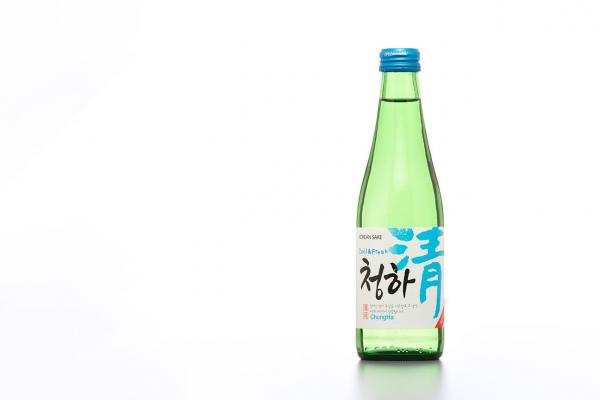
청하
ChungHa
0,33 l
€ 11,80
Reiswein
ChungHa („klarer Wein”) ist ähnlich wie der japanische Sake ein Reiswein mit 13 Vol.-%, der im selben Ritual wie Soju nachgeschenkt und vorwiegend kalt getrunken wird.
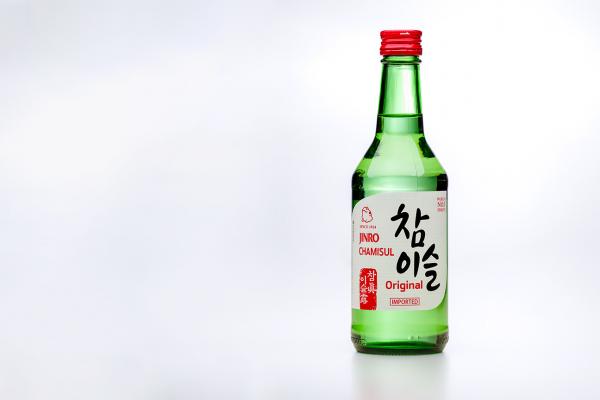
소주
Soju
0,33 l
€ 11,80
koreanisches Nationalgetränk
Soju ist mit Abstand das beliebteste alkoholische Getränk in Korea. Es wird aus Reis in Verbindung mit Süßkartoffel, Weizen oder Gerste gebrannt, ist klar und mild, und lässt sich mit einem Alkoholgehalt von 19,5 Vol.-% angenehm trinken.
Beim Einschenken wird die Flasche mit der rechten Hand gehalten. Die linke Hand stützt die Flasche oder wird unter den rechten Ellenbogen gelegt. Es wird darauf geachtet, daß die Gläser der Runde stets alle gefüllt sind. Tunlichst schenkt man nicht sich selbst ein, sondern immer den anderen am Tisch. Älteren gilt die besondere Aufmerksamkeit, ihnen wird immer zuerst nachgeschenkt. Engen Freunden kann auch mit einer Hand eingeschenkt werden, jedoch nur mit der rechten.
Pfirsich Soju
4 cl Glas
€ 2,90
Soju mit Pfirsichgeschmack
Jinro Soju Peach ist ein köstliches Mixgetränk mit dem süßen Geschmack von Pfirsich und einem Hauch von Soju. Entdecken Sie die erfrischenden Aromen und genießen Sie ein fruchtiges, exotische Getränk mit einem Alkoholgehalt von 13%.
Trauben Soju
350 ml Flasche
€ 11,80
Soju mit Traubengeschmack
Beim Chum Churum Grape Soju spürt man das Aroma der grünen Trauben. Mit einem Alkoholgehalt von 12 % empfindet man das Getränk als weich, schmackhaft und blass.
Traubensoju
4 cl Glas
€ 2,90
Soju mit Traubengeschmack
Beim Chum Churum Grape Soju spürt man das Aroma der grünen Trauben. Mit einem Alkoholgehalt von 12 % empfindet man das Getränk als weich, schmackhaft und blass.
Zitronen Soju
350 ml Flasche
€ 11,80
Soju mit Zitronen geschmack
Soju mit Zitronengeschmack ist ein köstliches Getränk. Leicht erfrischend eine Alternative zu aromatisiertem Wodka. Mit dezenter Süße und weichem Zitrusgeschmack sowie einem geringen Alkoholgehalt von 12% ist es besonders beliebt bei jüngeren Koreanern.
Zitronen Soju
0,4 cl Glas
€ 2,90
Soju mit Zitronengeschmack
Soju mit Zitronengeschmack ist ein köstliches Getränk. Leicht erfrischend eine Alternative zu aromatisiertem Wodka. Mit dezenter Süße und weichem Zitrusgeschmack sowie einem geringen Alkoholgehalt von 12% ist es besonders beliebt bei jüngeren Koreanern.
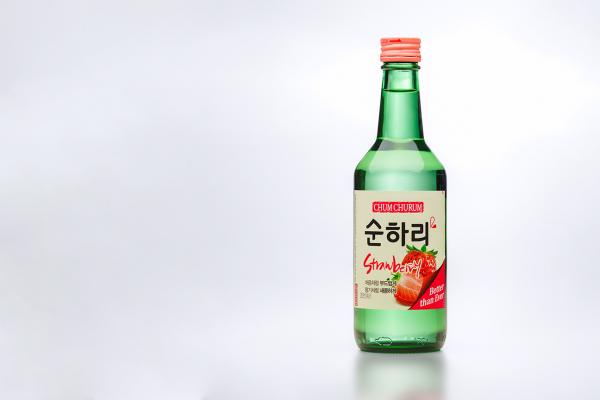
딸기 소주
Erdbeer Soju
360 ml Flasche
€ 11,80
Soju mit Erdbeergeschmack
Koreanischer Soju mit Erdbeer Geschmack. Fruchtig weicher Soju mit überraschend intensivem Erdbeeraroma. Dieser Mixju, das ist Soju gemixt mit Geschmack gefällt nicht nur Sojuliebhabern. Klar und mild lässt er sich mit einem Alkoholgehalt von 12 Vol.-% angenehm trinken.
Für eine Person, Für mehrere Personen, Koreanisch, alkoholisch
Plum Soju
350 ml Flasche
€ 11,80
Soju mit Pflaumengeschmack
Dieser Soju ist ausdrucksstark und rein, mit mittlerer Intensität von Pflaume und einem Hauch Süße am Gaumen und ausgewogenem Abgang. Gekühlt mit einem Alkoholgehalt von 13% ideal als Speisebegleiter zum koreanischen Barbecue.
Heidelbeersoju
4 cl Glas
€ 2,90
Soju mit Heidelbeergeschmack
Erleben Sie die fesselnde Geschmacksverbindung von Heidelbeer und Soju. Sie verfügt über einen milden Alkoholgehalt von 12 % und lässt sich daher einfach und genussvoll genießen.
Eine Sensation in Korea, die den Trend zu Mix-Ju, dem Soju mit Fruchtgeschmack ausgelöst hat.
Heidelbeersoju
350 ml Flasche
€ 11,80
Soju mit Heidelbeergeschmack
Erleben Sie die fesselnde Geschmacksverbindung von Heidelbeer und Soju. Sie verfügt über einen milden Alkoholgehalt von 12 % und lässt sich daher einfach und genussvoll genießen.
Eine Sensation in Korea, die den Trend zu Mix-Ju, dem Soju mit Fruchtgeschmack ausgelöst hat.
Yogurtsoju
360ml Flasche
€ 11,80
Soju mit Joghurtgeschmack
Koreas Nationalgetränk, Soju, ist eine sanfte Spirituose, die sich gut mit einer Vielzahl von Geschmacksrichtungen verträgt. Ganz speziell ist die von Joghurt. Die säuerliche, cremige Note ergänzt sich gut mit dem 12 % igen klarem Getränk.
Yogurtsoju
0,4 cl Glas
€ 2,90
Soju mit Joghurtgeschmack
Koreas Nationalgetränk, Soju, ist eine sanfte Spirituose, die sich gut mit einer Vielzahl von Geschmacksrichtungen verträgt. Ganz speziell ist die von Joghurt. Die säuerliche, cremige Note ergänzt sich gut mit dem 12 % igen klarem Getränk.
Pfirsich Soju
360 ml Flasche
Soju mit Pfirsichgeschmack
Jinro Soju Peach ist ein köstliches Mixgetränk mit dem süßen Geschmack von Pfirsich und einem Hauch von Soju. Entdecken Sie die erfrischenden Aromen und genießen Sie ein fruchtiges, exotisches Getränk mit einem Alkoholgehalt von 13%.
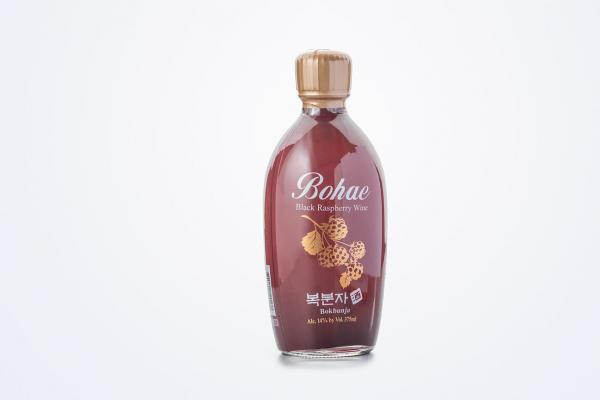
복분자주
Bokbunja-ju
0,375 Flasche
€ 21,90
Wein der wilden Himbeere
Fruchtwein aus der fermentierten, wilden schwarzen Himbeeren „Bokbunja”. 14 Vol.-%, tiefrote Farbe und mäßige Süße machen dieses Getränk beliebt.
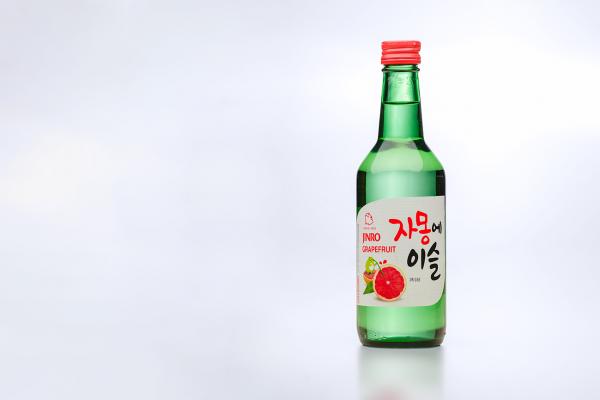
자몽 소주
Grapefruit Soju
360 ml Flasche
€ 11,80
Soju mit Grapefruchtgeschmack
Der Hersteller schreibt auf seiner Homepage zu diesem Produkt: Frische Grapefruit trifft Morgentau für den besten Geschmack. Dieser Mixju mit einem Alkoholgehalt von 13 Vol % kann von jedem genossen werden, dank einer perfekten Mischung aus Grapefruit und Soju.
Für eine Person, Für mehrere Personen, Koreanisch, alkoholisch
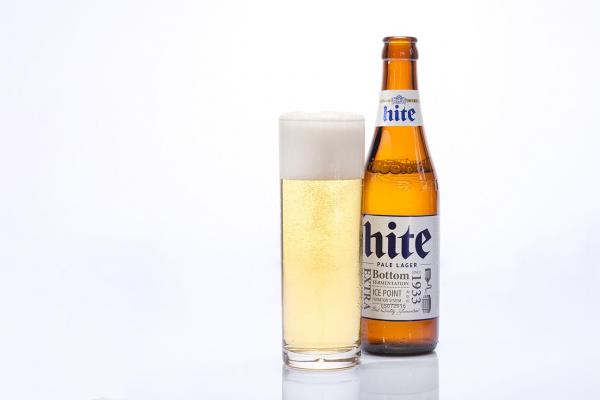
한국 맥주
Hite Beer
0,33 l Flasche
€ 5,50
Koreanisches Lagerbier
Ein Bier mit geringem Alkoholgehalt. Es schmeckt gut direkt aus der Flasche, aber auch fein im Glas.
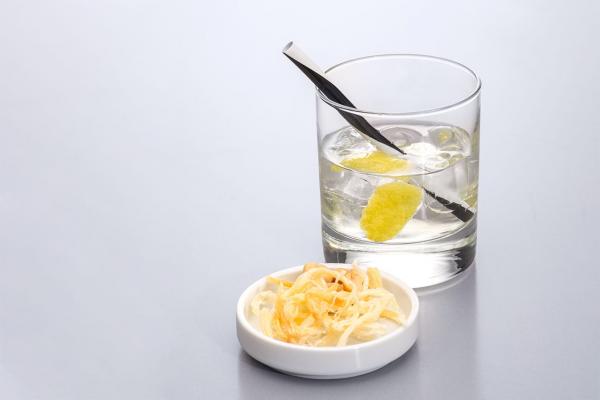
소주 마티니
Soju Martini
4 cl
€ 5,90
Aperitif
Eine west-östliche Verbindung als Appetitanreger.
Das koreanische Nationalgetränk Soju und Martini Bianko harmonieren ausgezeichnet miteinander, zum Start eines Mahls. Wir reichen dazu getrockneten Tintenfisch und Nüsse.